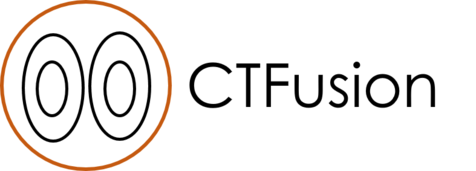CTFusion is a startup company in Seattle, Washington that was created in 2015 to commercialize fusion research at the University of Washington. It builds on almost thirty years of research and development at the U of W Helicity Injected Torus - Steady Inductive laboratory funded by U.S. government agencies such as the Department of Energy (DoE), The National Science Foundation (NSF) and Advanced Research Projects Agency in Energy (ARPA-E). It was just awarded a three-million dollar grant from the U.S. DoE ARPA-E for the development of a commercial nuclear fusion reactor. It is hoped that a CTFusion will be able to create a commercial fusion reactor by 2030.
CTFusion is using a compact donut shaped toroid fusion reactor design called a spheromak. The plasma is composed of deuterium and tritium (DT). Powerful magnetic fields are used to compress and heat the plasma in the spheromak. CTF refers to this as their plasma current sustainment technology imposed-dynamo current drive.
DT fusion in the CTF spheromak requires temperatures over on hundred and fifty million degrees. This superhot plasma is not dangerous because the total mass of the plasma in the spheromak is less than one gram which is the mass of a dollar bill. Unlike a nuclear fusion reactor, there is no decay heat or hot fuel and little radioactivity in the fuel for the spheromak. There is no solid fuel in a core that could melt down in case of an accident.
Derek Sutherland is the CEO at CTFusion. He says “Assume that you have a cup of coffee on your desk you would like to maintain at 150° F. If left on its own, the coffee would begin to cool, and continue doing so until it reaches room temperature. The amount of time required for it to cool will depend on how quickly the heat leaks out of the cup into the ambient environment.”
“You can slow that down by using a thermos or cup holder, but the coffee will eventually cool to room temperature unless we supply energy to the system to keep its temperature at 150° F.”
“A solution for doing so, which also satisfies the everlasting need for caffeine during rainy days in Seattle, is to drink some of your coffee that has cooled slightly below 150° F, and then fill your cup back up with coffee that is 200° F. With a balance between energy input and output, the coffee temperature can be held nearly constant indefinitely.”
The spheromak must balance the heat lost with the heat generated by driving electrical currents through the plasma in order to maintain the necessary operating temperature. This is one type of magnetic confinement in which powerful magnetic fields are used to confine the plasma. Other magnetic confinement systems include the tokamak in which external superconducting electromagnets are used to compress and heat plasma, the stellarator which twists magnetic fields to reduce turbulence and the reverse field pinch which varies the intensity of the magnetic fields as a function of distance from the center of the toroid.
CTFusion is a member of the American Fusion Project which is run by the American Security Project and it is one of sixteen members of the Fusion Industry Association (FIA). Andrew Holland is the Executive Director of the FIA. He said, “It is heartening to see that ARPA-E continues to support and encourage the good work of the fusion community. It’s an exciting time in the private fusion community, with over $1 billion in direct investment. We’re looking forward to great things from CTFusion.”
